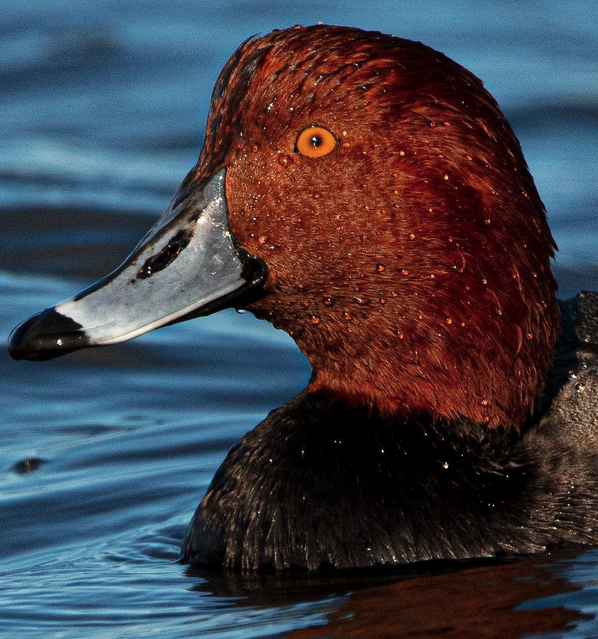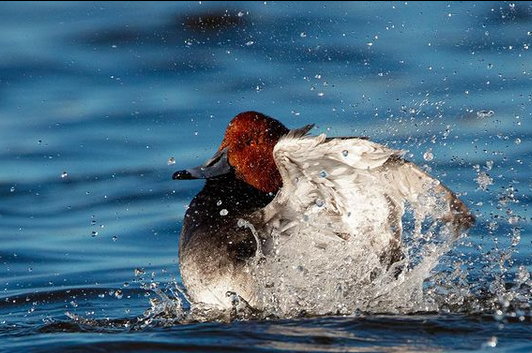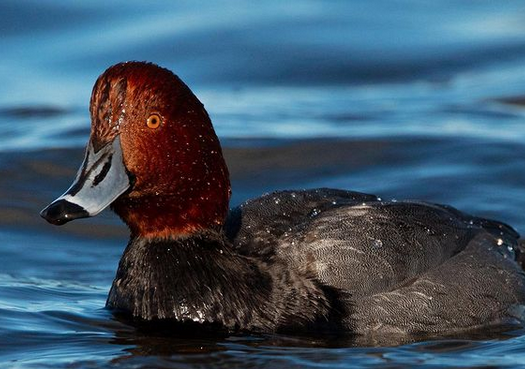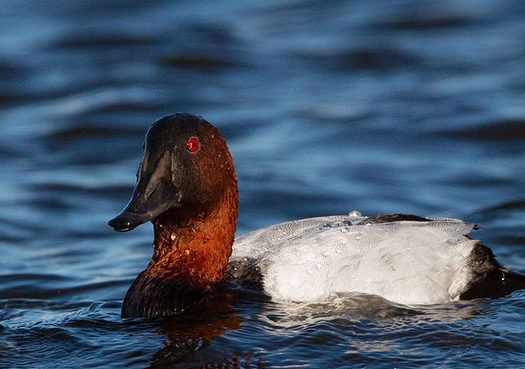By Sally Siko
The best part about wintertime in North Carolina is the arrival of interesting waterfowl to our state. Two such gems are these handsome Redhead and Canvasback ducks. They are incredibly beautiful creatures and I’m always excited to see them whenever I travel to eastern NC. Though at first glance the two species may look similar to one another, there are ways that you can tell them apart, even at a great distance.


The Redhead drake featured in the first 2 photos has a blueish bill with a black tip, an orangey yellowish eye, and more rounded “traditional duck” head profile.
The most distinctive ID point when viewed from far away is their gray back.
The Canvasback drake featured in the photos below have a black bill, ruby colored red eyes, and a unique triangular head profile.
You can ID them easily from way across the water by their bright white backs.


From November through late March/early April, Redheads and Canvasbacks can be spotted paddling around in the shallow bays and marshes foraging for a an underwater snack of stems, seeds, and roots of aquatic plants: shoalgrass, pondweeds, and sedges at many of our coastal wildlife refuges.
There is plenty of time left for you to go see them this winter so get out there if you can!
By the way, I’ve added 80 new birding tour dates to my schedule so if you’d like to join me out there to see these beautiful ducks for yourself check the link in bio for details & booking info!
Photos by Sally Siko of @bestlife_birding captured on my mighty mirrorless monster, the @canonusa #R5










